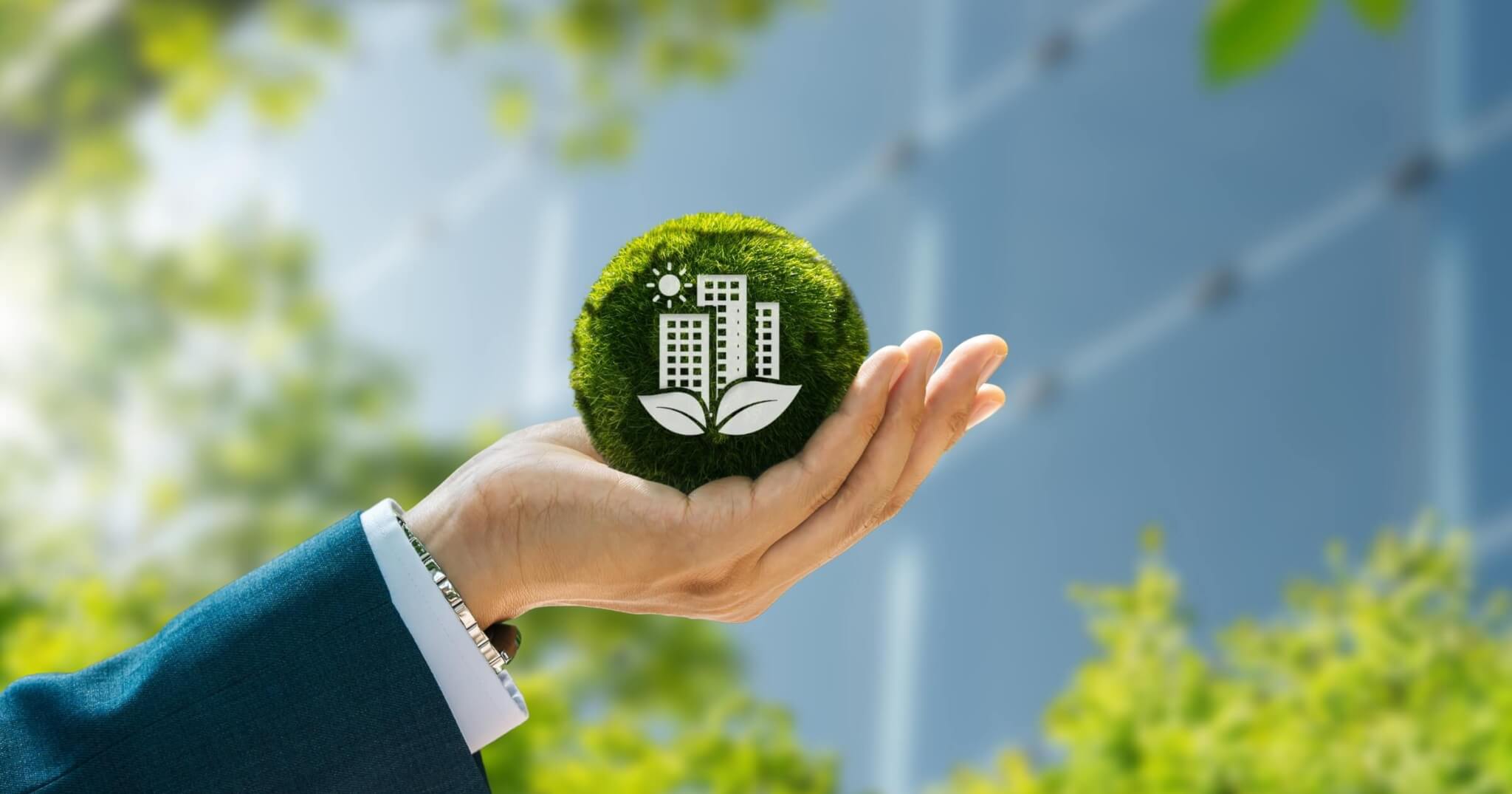Sustainable building is gaining traction across Canada as provinces roll out new climate strategies, green building codes, and low-carbon infrastructure plans. Across Canada, provinces are taking different paths toward greener building. Some provinces are retrofitting aging buildings, while others are turning to wood construction or experimenting with electric-only housing. Each one is taking a different approach, but the goal is the same: build cleaner and smarter. The following article provides a closer look at where that momentum is strongest and what lies ahead for 2025.
British Columbia
British Columbia is pushing the boundaries of sustainable building in Canada with the Energy Step Code and Zero‑Carbon Step Code, embedding rigorous energy and emissions targets into its building regulations. Adopted in 2017, the Energy Step Code provides a clear roadmap for all new buildings to meet zero-emissions criteria under municipal bylaws by 2032. As of March 10, 2025, the province requires most new buildings to meet at least Emission Level 1 (EL‑1), which mandates measuring and reporting operational greenhouse gas emissions.
The 2024 update to BC’s Building Code significantly expands the use of mass timber, allowing encapsulated mass‑timber structures up to 18 storeys, up from the previous 12‑storey cap, and extending usage to non-residential building types like schools, offices, and care facilities. This positions the province to lead in low-carbon, wood-based construction and support its forestry and clean-tech sectors.
Notable projects and initiatives:
- Brock Commons Tallwood House (Vancouver): An 18‑storey student residence at UBC, built using cross-laminated timber and LEED Gold certified, and once the tallest mass timber structure globally.
- UBC Bioenergy Research Facility: A campus-scale wood‑biomass plant providing renewable heating and electricity.
- Zero Emissions Building Exchange: Vancouver-based collaborative hub advancing net-zero construction and policy.
Ontario (Toronto)
Toronto has taken a structured approach to sustainable building in Canada through the Toronto Green Standard, a layered system that sets baseline energy and emissions requirements for all new construction. Developers must meet Tier 1 standards at a minimum, while additional incentives are offered for going beyond. This standard plays a significant role in the city’s broader climate plan, TransformTO, which aims to reach net-zero by 2040.
When Ontario introduced Bill 17 in mid-2025, it raised questions about whether it would override local sustainability rules. But according to city officials and several legal reviews, Toronto still has full authority to apply and enforce its green building standards.
Notable projects and initiatives:
- Enwave Deep Lake Cooling: A district-level cooling system that uses cold water from Lake Ontario to reduce energy use in downtown buildings.
- The Well mixed-use community: A major development incorporating high-efficiency HVAC systems, green roofing, and low-carbon design strategies.
- Toronto multi-unit retrofits under DRAI funding: Projects supported by the Canada Green Buildings Strategy, upgrading existing buildings for better energy performance.
- Better Buildings Boot Camp & Net-Zero Forum events: Hosted through Green Building Canada and supported by provincial and federal initiatives, these events promote industry knowledge-sharing and rapid adoption of net-zero practices.
Quebec
Quebec has set ambitious climate targets under its 2030 Green Economy Plan, committing to reducing greenhouse gas emissions by 37.5 % below 1990 levels and achieving carbon neutrality by 2050. A core element of that plan is cutting building-heating emissions in half by 2030, a goal legislated in late 2020 and receiving strong attention from utilities and government agencies.
Quebec is putting serious funding behind cleaner ways to heat homes and buildings. With $550 million already committed, the province is phasing out oil and gas systems in favor of electric alternatives like heat pumps; an approach that’s also driving interest in low-emission building materials and design.
Notable projects and initiatives:
- Réseau express métropolitain (REM): A large-scale, all-electric light rail network in Greater Montréal that supports transit-oriented development and low-carbon urban growth.
- Varennes biofuels facility: A government-backed hub converting organic and agricultural waste into renewable biofuel, helping support sustainable energy production in building-heating sectors.
- Montreal’s roadmap to zero-emission buildings by 2040: The Canada Green Building Council is working with the city to transition all new and retrofit projects to net-zero operational emissions by 2040.
- Deep retrofits in Quebec municipalities: Programs funded under Canada’s Green Buildings Strategy are upgrading public and multi-family buildings across the province to improve energy performance dramatically.
Alberta
Calgary and Edmonton have introduced the Green Buildings Priority Stream, a voluntary program offering accelerated permit reviews and dedicated staff support for projects committed to high-performance, energy-efficient design. This has helped streamline sustainable construction and infill projects in both cities.
The province is also benefiting from Deep Retrofit Accelerator funding and grants aimed at low-carbon upgrades. These support training, energy modeling, and whole-building retrofits across existing commercial and institutional buildings.
Notable projects and initiatives:
- Shepard Energy Centre carbon capture retrofit: A major infrastructure project integrating carbon capture technology into Alberta’s natural gas-fired power station.
- Air Products net‑zero hydrogen energy complex (Edmonton): A multi-billion-dollar facility designed to produce hydrogen with more than 95% carbon capture and support hydrogen refueling infrastructure between Edmonton and Calgary.
- Net‑Zero housing demonstrations funded by CCEMC: The Landmark Group in Calgary built 19 Net Zero Energy Homes and 37 Net Zero Carbon Ready Homes, showcasing affordable, energy-efficient residential construction for mainstream markets.
Nova Scotia
Nova Scotia is implementing its HalifACT climate strategy to increase sustainable building in Canada, which aims for a net‑zero economy by 2050 and bans oil‑fired heating systems in new buildings starting in 2025. This regulation aligns with efforts to improve energy efficiency and reduce greenhouse gas emissions across the province.
The Building to Zero Exchange (BTZx) is an industry-government initiative established in 2023 to support high-performance retrofits and net-zero construction at scale. It convenes stakeholders, provides training, and develops policies to accelerate the transition.
Notable projects and initiatives:
- Dal Emera IDEA Building (Halifax): A LEED Platinum academic facility at Sexton Campus, featuring rooftop solar (second-largest in Nova Scotia), geothermal heating, high-performance envelope, and energy use reduced by over 70% compared with average educational buildings.
- Deep retrofit programs & affordable housing pilots: The province is investing $21.9 million, plus federal support, to retrofit public and affordable housing toward net-zero energy readiness.
- Oil-heating conversion and retrofit strategy: As part of the “Our Climate, Our Future” plan, Nova Scotia will retrofit 60,000 homes and reduce heating-oil use by 20% by 2030.
- ECT‑NS research program: Net Zero Atlantic’s R&D funding supports local pilots in building technologies and clean-tech solutions.
Bottom line
Provinces are taking bold and varied steps to drive more sustainable building in Canada. British Columbia leads with progressive step codes and mass timber innovation. Ontario, especially Toronto, is pushing performance standards through city-wide policies like the Toronto Green Standard. Quebec is electrifying building systems and targeting deep emissions cuts. Alberta is backing voluntary green building programs and large-scale infrastructure upgrades, while Nova Scotia is phasing out oil heat and investing in net-zero research and retrofits.
Heading into 2026, provinces across Canada are raising the bar on energy standards and putting more resources into retrofits and cleaner building practices. Net-zero is starting to show up in real projects and everyday decisions; for people working in construction and design, that shift means more support, more funding, and more practical ways to build with the future in mind.
More on sustainable construction:
- 10 sustainable construction technology trends to watch 2025–2027
- Sustainable infrastructure trends
- 10 global companies leading the shift to sustainable construction
- Top 6 mass timber companies leading the sustainable construction revolution
Get the latest on sustainable building, jobsite innovation, and industry news straight to your inbox. Subscribe to our newsletter today.



